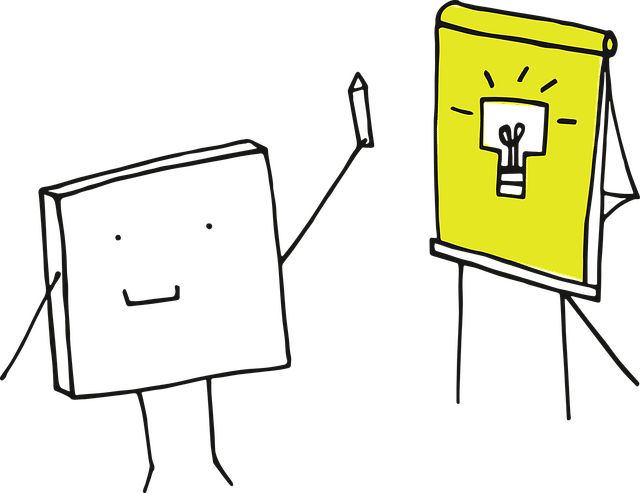
Back in the 70s, people started talking about learning styles, and since then, it’s been a whole thing. Tons of models, theories, and ideas have popped up, all trying to figure out how we actually learn stuff. Turns out, we all do it a little differently—big surprise, right? Researchers have thrown in their two cents, and their work has helped teachers tweak their methods to fit students’ various quirks.
The result? Classrooms where students are more engaged (fewer blank stares, hopefully) and learning actually sticks. Recognizing these learning styles doesn’t just help teachers—it also gives students a chance to learn about themselves.
They figure out what works for them, whether it’s color-coded notes, podcasts, or pacing around the room like they’re solving a murder mystery. By understanding their learning styles, students can identify compatible study strategies that enhance their learning effectiveness and retention of information.
It’s all about making learning less of a chore and more of a “Hey, I can actually do this!” moment. So, whether you’re a visual learner, a hands-on type, or someone who just needs coffee to even function, there’s a style for you—and figuring it out can make a huge difference.
Understanding Learning Styles

Let’s talk about learning styles—or, as some people call it, “that thing you check online instead of actually studying.” The idea is simple: everyone learns differently, and recognizing your style can help you turn “ugh, this is impossible” into “okay, I’ve got this.”
The VARK model (aka the BuzzFeed quiz of learning) splits people into four categories:
Visual learners: You love a good chart, diagram, or doodle. If it’s colorful and organized, you’re in.
Auditory learners: Podcasts, lectures, or just talking to yourself while pacing the room—sound is your jam.
Reading/Writing learners: Give you a textbook or a blog, and you’ll conquer the world. Notes are basically your love language.
Kinesthetic learners: Hands-on is the way to go. If you can’t touch it, build it, or try it out, what’s the point?
Figuring out your style is like finding the right playlist for studying—it makes everything easier. But the kicker? Your learning style isn’t carved in stone. Life happens, your preferences shift, and suddenly you’re vibing with flashcards when you used to swear by YouTube tutorials. Flexibility is key, folks.
Oh, and VARK isn’t the only game in town. There are plenty of other models out there, each with their own quirky take on how our brains work. Exploring them can help you mix and match strategies until you find what clicks. The goal? Turn your “I just can’t focus” moments into productive study sessions that actually stick, even if you have trouble focusing.
At the end of the day, it’s not about labeling yourself—it’s about working smarter, not harder. So, grab your charts, podcasts, or whatever floats your study boat, and start crushing it.
The Importance of Knowing Your Preferred Learning Style

Figuring out how you learn best is like discovering the cheat codes for your brain. Whether you’re a visual learner who thrives on charts and doodles, an auditory learner who loves a good podcast, or one of those hands-on kinesthetic types who needs to do to learn, knowing your style can make study sessions a whole lot less painful—and actually effective. Bonus: it might even make studying kind of… enjoyable? (Okay, let’s not get crazy.)
When you align your study habits with how your brain naturally works, everything just clicks. Literally. Your memory gets a boost, you understand stuff faster, and you stop wasting time on techniques that don’t work for you. Like cramming a 300-slide presentation when you’re really an auditory learner who just needs to hear someone explain it. Effective teaching methods can vary depending on your learning style, so work smarter, not harder, right?
And let’s be real—if focusing is your kryptonite, knowing your learning style can save the day. Can’t sit still during a lecture? Maybe you’re more of a visual learner who needs to sketch out key points. Or maybe you’re all about writing things down to actually pay attention. Whatever works, as long as it keeps you from mentally planning your next snack run mid-class.
The best part? Knowing your learning style also means you can pick learning environments that don’t make you want to scream into a pillow. Love group discussions? Great—find a class that vibes with that. Prefer working solo with YouTube tutorials? Nail those self-paced online courses. Tailoring your learning environment is like curating your own playlist: it just hits differently when it’s made for you.
At the end of the day, understanding your learning style isn’t just about passing tests or acing presentations—it’s about setting yourself up for success in the long run. When you know what works for you, it’s easier to tackle tricky topics, boost your confidence, and even adapt to new situations down the road. Think of it as your secret weapon for lifelong learning—minus the boring lectures and stress dreams about pop quizzes.
Identifying Your Learning Style

Ever wonder why some people ace exams by doodling in the margins while others need to read the textbook cover to cover (twice)? It’s probably because we all have different ways of learning, and figuring out yours can make life a whole lot easier. Take a learning style quiz to find out if you’re more of a visual, auditory, or kinesthetic learner. Think of it as the Hogwarts Sorting Hat, but for study techniques.
Once you know your learning style, you can stop trying to shove square pegs into round holes—or, in this case, stop trying to memorize flashcards if you’re someone who learns by doing. This little nugget of self-awareness can help you tweak your study habits, making them way more effective. Because let’s be honest, who has time to re-learn the same concept 47 times?
Take a minute to think about how you process new stuff. Are you that person who needs a step-by-step guide, or someone who just wings it and learns through trial and error? Understanding what works for you can help you lean into your strengths (and maybe finally stop procrastinating on the stuff that feels like pulling teeth).
Not sure where to start? Ask yourself how you like to get info. Do you prefer someone explaining things out loud, or do you need it all written down with bullet points and maybe a diagram? This tiny bit of introspection can save you hours of frustration and help you pick study methods you’ll actually stick with.
Enhance Your Learning Experience with Our Learning Style Quiz
Understanding your learning style can significantly impact how you approach tasks, whether it’s reading written directions or preparing for a group presentation. Are you someone who excels when you follow written directions, or do you find it easier to follow oral directions? Identifying your preferences can help you tailor your study strategies effectively.
Before you start the quiz, consider how you engage with different forms of information. Do you find graphs and patterns in data intuitive, or does spelling out concepts and working through math problems help solidify your understanding? Perhaps you’re someone who prefers to see letters and words to grasp new ideas.
Taking a learning style quiz can also illuminate how you form opinions and process feedback, such as grades. It’s an opportunity to reflect on whether you thrive in environments that challenge your verbal skills or if you prefer visual aids to guide your learning.
By recognizing these patterns, you can enhance your educational experience and achieve better outcomes. So, are you ready to start the quiz and discover more about your learning preferences? Embrace the insights and watch your academic journey transform.
And let’s not forget about how you communicate. Are you better at putting your thoughts into words during a group discussion, or do you prefer writing them down where nobody interrupts you? Knowing this can not only make learning easier but also help you avoid those awkward “let’s brainstorm out loud” moments at work. Play to your strengths, tweak what needs tweaking, and watch your learning game level up without breaking a sweat.
VARK Model

Neil Fleming popularized the VARK theory of learning styles in 1987.
The fifth result in the VARK model, multimodal, includes individuals who favor two or more modalities equally. This means that such learners are versatile and can adapt their learning strategies to suit different contexts and subjects, thereby maximizing their learning potential. By understanding their multimodal preferences, these learners can tailor their study habits to incorporate a variety of techniques, such as combining visual aids with auditory inputs or integrating reading materials with hands-on activities.
Visual learners prefer to learn through charts, maps, diagrams, and images. They often find that these visual aids help them better organize and recall information. For these learners, using color-coded notes or creating mind maps can be particularly beneficial in enhancing comprehension and retention.
Aural learners learn best through discussions and oral presentations. These individuals often excel in environments where they can engage in verbal exchanges, such as group discussions or lectures. Listening to recorded lectures or participating in study groups can further enhance their learning experience.
Read/Write learners prefer content in written form such as books and manuals. They thrive when they can interact with text, whether through note-taking, summarizing, or engaging in extensive reading. For these learners, writing essays or creating detailed written reports can facilitate deeper understanding and long-term retention of information.
The VARK model was proposed by Fleming and Colleen Mills in 1992. This framework has been widely adopted in educational settings to help students and educators identify and leverage individual learning preferences. By utilizing the VARK model, educators can design more inclusive curricula that accommodate diverse learning styles, thereby fostering a more engaging and effective learning environment.
Understanding the role of attention span and self-efficacy in the learning process is crucial for students aiming to improve their academic performance. Recognizing that trouble focusing is common, especially for adults, learners can strategically design their study sessions with frequent breaks and diverse activities to optimize focus and retention. Meanwhile, cultivating a strong sense of self-efficacy empowers students to tackle challenges confidently, fostering persistence and adaptability in their learning approach. Together, these strategies empower students to enhance their educational outcomes and achieve their academic goals more effectively.
FAQ
What are learning styles, and why should I care?
Learning styles are basically how your brain says, “Hey, this is how I prefer to absorb stuff.” Some of us like pictures, others need to hear it, and a few of us just wing it with hands-on trial and error. Figuring out your learning style can make studying feel less like pulling teeth and more like, well, learning. Match your methods to your brain’s vibe, and you’ll probably remember more than just what you had for breakfast.
How do I figure out my learning style?
Easy. Take a quiz (Google is your friend), think about how you usually “get” things—do you love doodling, listening, or physically doing stuff?—and reflect on what sticks. Spoiler: If you zone out in lectures but light up with a good infographic, you’re probably not an auditory learner. It’s not rocket science, but hey, if it works for you, who’s judging?
Can my learning style change?
Short answer: yep. Long answer: as life throws curveballs (new jobs, hobbies, or let’s face it—survival skills), your brain learns to adapt. So, while you may have been a “textbook-and-highlighter” kind of person in school, future you might thrive with podcasts or hands-on workshops. Growth is cool like that, and it highlights the importance of adapting your study strategies to match your evolving learning style.
What’s the VARK model, and does it sound as nerdy as it is?
Oh, totally. But it’s also pretty handy. VARK stands for Visual, Auditory, Reading/Writing, and Kinesthetic—fancy terms for how we learn best. Visual learners love charts and memes. Auditory learners prefer chatty lectures or podcasts. Reading/Writing types are into good old-fashioned notes. And kinesthetic learners? They need to roll up their sleeves and do the thing. Knowing your VARK type can help you cut through the noise and focus on what actually works for you.
Is there actual science behind learning styles, or is this just self-help fluff?
Depends on who you ask. Some studies say tailoring lessons to your learning style is life-changing. Others argue that mixing it up works just as well—so don’t throw out all the flashcards just yet. At the very least, knowing your learning style helps you understand yourself better, and that’s always a win. Plus, it’s a great excuse to tell people, “Sorry, I’m just not a lecture person,” and walk out guilt-free.
Learning Style Quizzes
Visual Learner Quiz
-
When studying, do you prefer using diagrams, charts, or maps to understand concepts?
-
Do you find it easier to remember information when it’s presented in a visual format, such as infographics or videos?
-
Do you enjoy organizing your notes with color-coding or highlighting?
-
Do you prefer reading books with illustrations or visual aids?
-
When solving problems, do you visualize the steps in your head?
Interpreting Visual Learner Results: If you answered “yes” to most of these questions, you likely have a strong visual learning preference. Consider incorporating more visual elements into your study routine, such as mind maps, diagrams, and color-coded notes.
Auditory Learner Quiz
-
Do you prefer listening to lectures or podcasts over reading textbooks?
-
Do you find it helpful to discuss topics with others to better understand them?
-
Do you remember information more easily when it’s explained to you verbally?
-
Do you enjoy participating in group discussions or oral presentations?
-
Do you often use mnemonic devices or rhymes to memorize information?
Interpreting Auditory Learner Results: If you answered “yes” to most of these questions, you may be an auditory learner. Try to incorporate more listening activities into your studies, such as recording lectures, joining study groups, or using audio-based learning resources.
Reading/Writing Learner Quiz
-
Do you prefer reading and writing as your primary method of learning?
-
Do you find it easier to understand information when you take detailed notes?
-
Do you enjoy writing essays or reports to articulate your understanding?
-
Do you prefer using written instructions over oral ones?
-
Do you frequently make lists or summaries to organize your thoughts?
Interpreting Reading/Writing Learner Results: If you answered “yes” to most of these questions, you are likely a reading/writing learner. Focus on using written materials, such as textbooks and notes, and practice summarizing information in your own words to enhance retention.
Kinesthetic Learner Quiz
-
Do you prefer learning through hands-on activities or real-life examples?
-
Do you find it easier to understand concepts when you can physically manipulate objects?
-
Do you enjoy engaging in experiments or practical projects?
-
Do you often use gestures or movements to explain your thoughts?
-
Do you prefer participating in role-plays or simulations to grasp new information?
Interpreting Kinesthetic Learner Results: If you answered “yes” to most of these questions, you likely have a kinesthetic learning preference. Incorporate more physical activities into your study sessions, such as building models, conducting experiments, or using flashcards.
Multimodal Learner Quiz
-
Do you find yourself adapting to different learning styles depending on the subject or context?
-
Do you enjoy using a mix of visual, auditory, reading/writing, and kinesthetic methods to study?
-
Do you often switch between different study techniques to enhance understanding?
-
Do you feel comfortable learning in various environments, such as lectures, labs, or group settings?
-
Do you find that combining multiple approaches helps you retain information better?
Interpreting Multimodal Learner Results:If you answered “yes” to most of these questions, you are likely a multimodal learner. Embrace your versatility by integrating various learning methods into your study routine, allowing you to adapt to different situations and optimize your learning potential.
